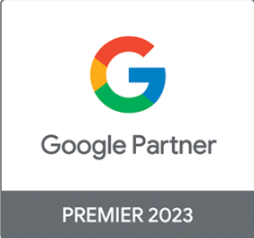Paid Media Audits
In the ever-evolving world of digital advertising, precision is paramount. At Algorithm Agency, our paid media audits slice through the noise to reveal the true potential of your campaigns. With a meticulous approach, we uncover critical insights and provide actionable recommendations that transform your paid media strategy and supercharge your ROI.
Unlock Precision and Performance with Paid Media Audits
A paid media audit is like a fine-tuning session for your digital engine. Regular paid media audits ensure that your campaigns are not only running smoothly but are also aligned with your business objectives and primed for continuous improvement. By identifying inefficiencies and seizing opportunities, we help you stay ahead in the competitive digital landscape.
Benefits of Algorithm Agency’s Paid Media Approach:
- Our audits are focused on delivering measurable improvements in performance.
- We work closely with you and your team, ensuring that our recommendations are aligned with your business goals.
- With numerous success stories, our audits have consistently driven better results for our clients.
Algorithm’s Quick and Inexpensive Paid Media Audit Process
Initial Consultation and Campaign Objectives: We begin with an in-depth consultation to understand your business goals and current campaign performance.
Performance Analysis of Campaigns and Keywords: We analyse your campaign and keyword performance to identify strengths and areas for improvement.
Assessment of Campaign Structure & Hygiene: Ensuring your campaign structure is logical and efficient, we look for gaps and redundancies.
Detailed Data Analysis and Insight Gathering: We conduct thorough data analysis to gather insights into your current performance and identify areas for improvement.
Strategic Alignment with Business Objectives: We align our audit findings closely with your business objectives to ensure actionable recommendations that drive results.
Proven Methodology for Performance Enhancement: Using a proven methodology, we consistently achieve significant performance improvements for our clients, optimizing ROI and efficiency.
Paid Search Recommendations and Immediate Implementation
Based on our comprehensive paid audit, we provide customised recommendations for immediate improvements. Our strategies include:
- Customised Suggestions for Improvement: Tailored to your specific needs and objectives.
- Collaboration with Existing Agencies: We work seamlessly with your existing partners to implement changes.
- Quick-win Strategies: Identify and implement strategies that yield immediate results.
Get Started with a Paid Media Audit from Algorithm
Ready to unlock the full potential of your paid media campaigns? Contact Algorithm Agency today for a consultation and take the first step towards transforming your digital strategy. Let’s uncover hidden opportunities and drive your campaigns to new heights.
Reach Out – Lets Chat
Latest Posts
- Algorithm’s Dual-Layered Search Strategy: SEO & AI IntegrationSEO is evolving and your strategy should too. Discover how Algorithm’s Dual-Layered Search Strategy combines the power of traditional SEO with AI-driven intelligence to drive performance, adaptability, and long-term growth. Read More…
- Tips, Tricks & Useful Resources – Performance Marketing 101sDigital marketing is a vast subject and can often leave you feeling bewildered. You might have attempted digital marketing courses in the past or plan on doing so, regardless the challenge is always how to take the theory and pull practical insights and knowledge from it that you can apply in your work. To make … Read More




